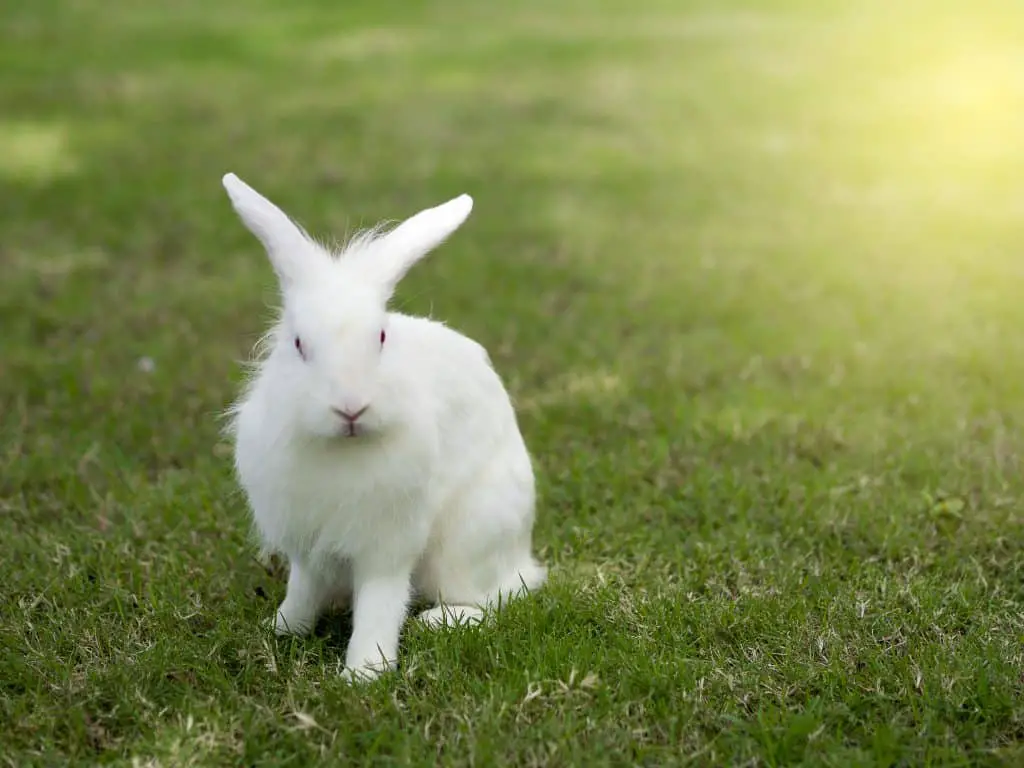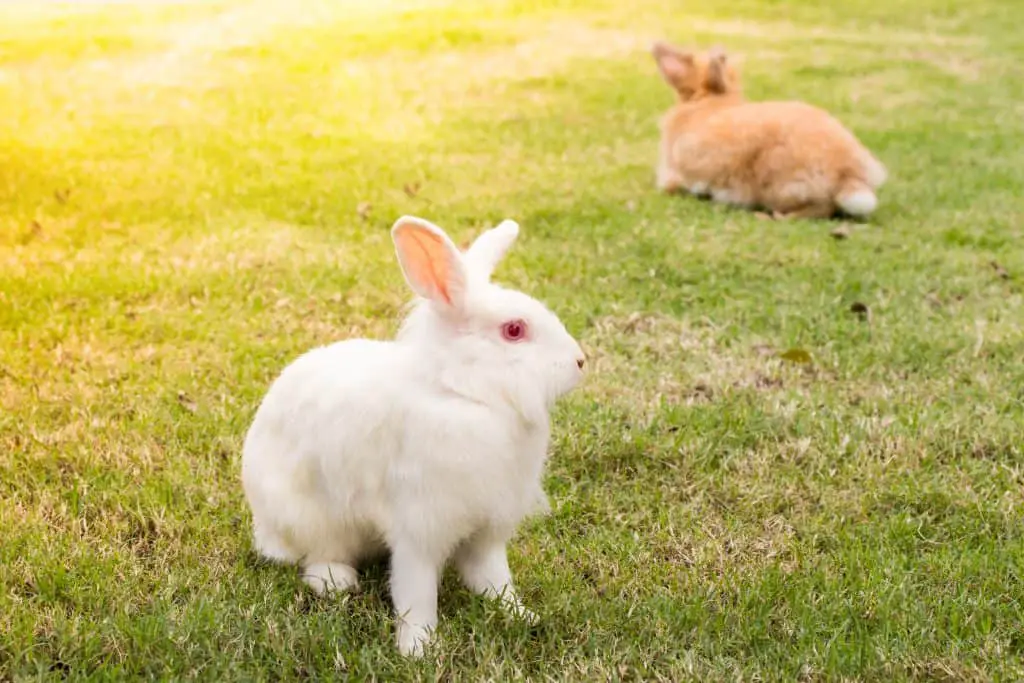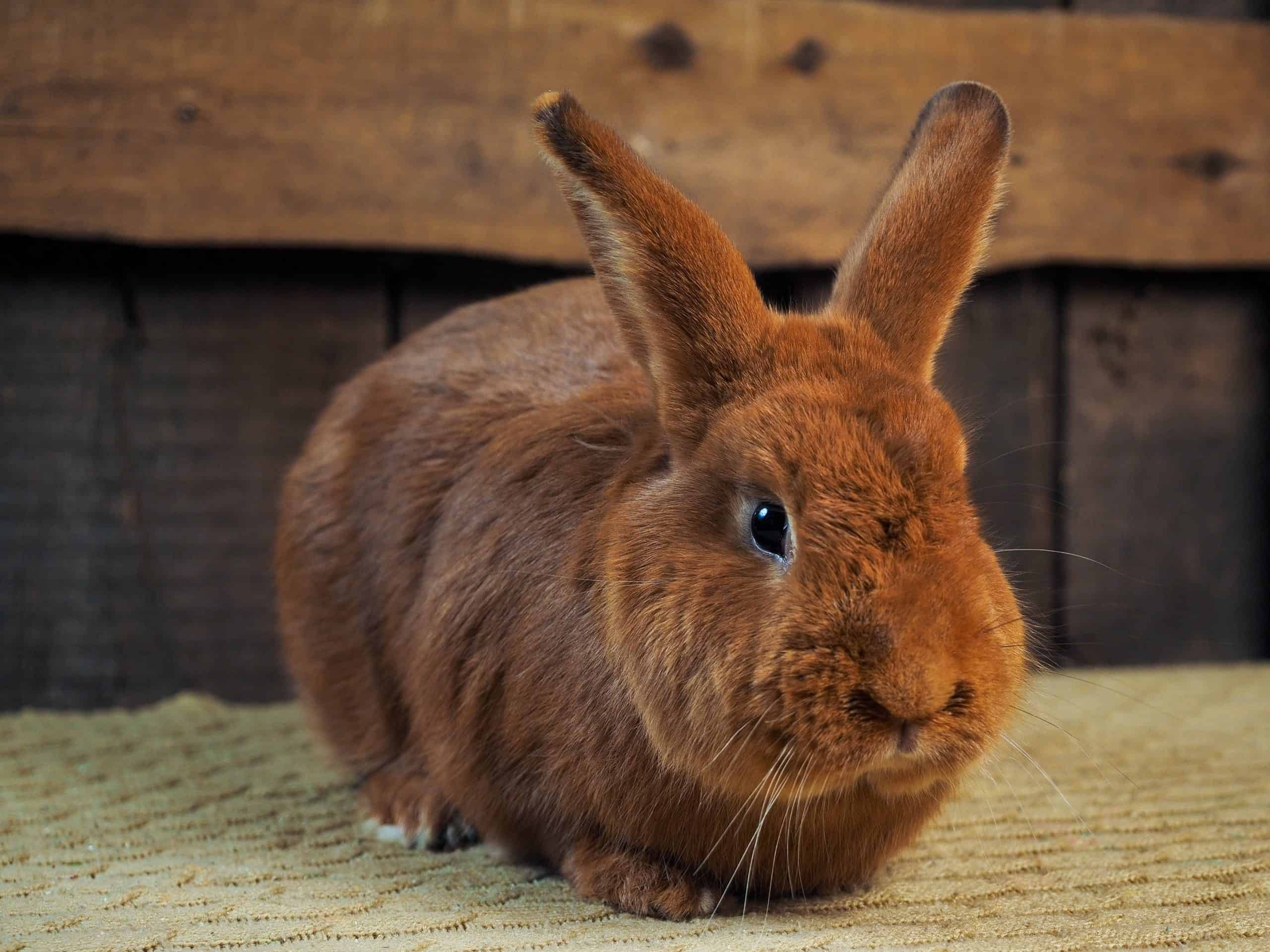New Zealand rabbits are a breed that has gained much popularity among rabbit shows and as pets. Here you will find more information about these magnificent rabbits and you will learn how to care for New Zealand rabbits.
Their intelligence and docile character have made them one of the favorite pets in homes with children. Unfortunately, these adorable rabbits also serve for scientific research purposes in laboratories and are prized for the production of meat and fur.
Origins of the New Zealand Rabbit
Despite their name, New Zealand rabbits were first grown in the United States. These bunnies originated in 1916 in California from the crossing of White American rabbits with Giant Flemish rabbits and Angora rabbits.
W.S. Preshaw raised the first litter of New Zealand rabbits with a plan to produce a rabbit that would be excellent for meat and fur trade. The American Breeders Association (ARBA) officially recognized the breed one year later, and the New Zealand rabbits began to gain popularity immediately due to their quick growth rate and meat production.
Purposes for its Development:
As we just mentioned, breeders began to produce these rabbits with two main goals in mind:
- Fur production: The New Zealand Rabbit displays a dense, luxurious fur that returns to its original position when brushed in the opposite direction. The inner layer of the coat is soft and thick and intermingled with the rougher protective coat hairs. These characteristics make them highly sought after for their fur.
- Meat production: These rabbits are known for their fast growth, which is why they give a good yield of meat. A New Zealand rabbit can produce between 6 and 8 kilos of meat by the age of three months. The structure and conformation of its body favor the production of meat. Furthermore, this breed has reproductive advantages that reinforce this industry.
In addition to the purposes listed above, New Zealand rabbits are being employed for laboratory purposes. More than one million New Zealand rabbits participate in different laboratory tests. These animals respond similarly to diseases and medicines as humans do. It is for this reason that they are so highly valued in pharmaceutical laboratories, cancer research centers, and university hospitals. New Zealand rabbits have been used to develop tests and medicines for diseases such as diabetes, diphtheria, tuberculosis, cancer, and heart disease. The effects of skin creams, cosmetics, special diets, and food additives have also been tested on New Zealand rabbits.
Physical Traits
These bunnies belong to the group of large rabbit breeds. New Zealanders are pretty big rabbits. They can reach between 4 and 6 kg when mature, except for the red variety, which is smaller and does not exceed 3 kg in weight.

Body
Their bodies are medium-sized, long, and well rounded. The New Zealand white should have a robust, muscular, well-formed body with large, long hind feet and short front feet. There should be plenty of meat on the back and ribs. The red variety is slightly smaller than the other colors, with slightly thicker skin. The body of the Red must be well compact, rounded, and must have firm muscle mass.
Head
They have a proportionally large, broad, round head with rounded cheeks. It must be strong and muscular in appearance, but must not be out of proportion to the rest of the body. The neck should not be too long.
Eyes
Their eyes should be bright and alert. The white variety has pink, bright, vivid eyes with a good depth of color. Black rabbits have bright dark brown eyes, and the red ones have brown eyes.
Ears
Their ears have a medium thickness and are strong at the base. Their size is medium-long and upright with rounded ends. They have a much shorter coat than their bodies, presenting a pink shade.
Colors
These gentle giants come in several colors:
- White: This was the first variety to emerge. The coat is pure white, and the eyes are pink. There should not be any spots or discolorations on any part of the animal’s body.
- Black: The coat is jet black, always uniform, and the eyes are dark brown.
- Broken: It is one of the most recent varieties. Broken can have the coat of any color of the breed (red or black) combined with white. They have a pattern in which the colored parts have to match the standard of the red and black varieties.
- Red: This variety has a brightly colored red coat and brown eyes with a slightly different tone to the belly. They could have a whitish shade at the base of the tail as well as on the plantar pads. Red New Zeland bunnies are considered in many countries a breed of its own because the characteristics of this animal differ significantly from the original variety.
Breeders have managed to develop a blue variety, but this has not yet been recognized by the ARBA.
Life Expectancy
New Zealand rabbits can live from 8 to 12 years old approximately. Their life expectancy will be longer as they receive better care and love. Therefore, don’t stop caring and pampering them so you can enjoy their company for many years to come.
How is Their Nature?
This breed of rabbits makes excellent pets and have gained great appreciation due to their peaceful, friendly, and sociable character. They love to be petted and to stay in their owners’ laps for hours, as well as having a good time playing. They are also smart and can learn tricks with ease. They can easily cope with living close to other animals and are perfect as pets for small children as they are not aggressive at all.
How to Care for New Zealand Rabbits
Due to their weight and size, these beautiful rabbits require some special care, which we must know before we venture to bring one into our home.

They Need a Lot of Space
Given their big size, these rabbits require a sufficiently large space where they can play and move freely. Most people prefer to house their New Zealand rabbits inside their house simply because of its size. If you want to provide a cage for them, this would have to be very large. Any hutch would need to provide enough space for the rabbit to jump around. It should also be high enough for your rabbit to stand upright.
It is necessary to offer plenty of water and hay, as well as toys and other objects with which they can entertain themselves. We can also include an area in which they can relieve themselves.
It is worth knowing that these rabbits must remain on a soft surface. Otherwise, they will develop plantar sores due to the weight they are carrying. These sores are highly painful and can degenerate into lameness and serious complications.
Hygiene is also important. If you decide to provide a cage, this should be cleaned thoroughly at least once a week. Excrements must be removed daily.
Feeding
Their feeding is not too different from that of other domestic rabbits, and hay is one of the main elements of their diet. There is no exact formula for knowing the quantities which a rabbit should consume, but a rule of thumb is that the amount of food should be between 100-300 grams per day. For a more precise formula, a good recommendation is that the ideal amount of food should be 50 grams per kilo of weight.
As far as feeding is concerned, a combination of good quality hay, fresh vegetables, and fruits, the most beneficial being green leafy vegetables, should be given. Rabbits also need a clean water supply at all times.
Caring for Their Fur
The fur of New Zealand rabbits demands minimal care. To maintain your rabbit’s coat in good shape, you can brush it at least once a week. Make sure you use a special comb or brush for rabbits.
The Healthy Rabbit
The New Zealand Rabbit is generally a hardy breed. No illnesses typical of New Zealand rabbits have been identified, and there are no known congenital pathologies linked to this breed. However, several health problems can affect all rabbits.
One of the pathologies that rabbits can develop concerns their teeth, which never stop growing. If their teeth are not worn out properly, several issues could arise. Some of the most frequent are abscesses, malocclusions, infections, and dental and gum diseases.
Likewise, you should also check on their ears, eyes, and nose, as a poor condition is a clear sign that something is not going well.
Make sure to visit your vet regularly so that he can detect any illness in advance. Also, remember to keep all immunizations up to date and deworm them regularly.
Final Recommendations
The New Zealand Rabbit has become an increasingly popular breed of a domestic rabbit as they are so big and gentle. However, before acquiring one make sure you learn the basics of how to care for a New Zealand rabbit and that you can provide them with everything they need to be in good condition and happy.
It is necessary to provide them with adequate space, to give them quality food, and to assure them periods of activity and daily activities. They will enjoy a healthy and happy life, and you will enjoy their company for years to come.

